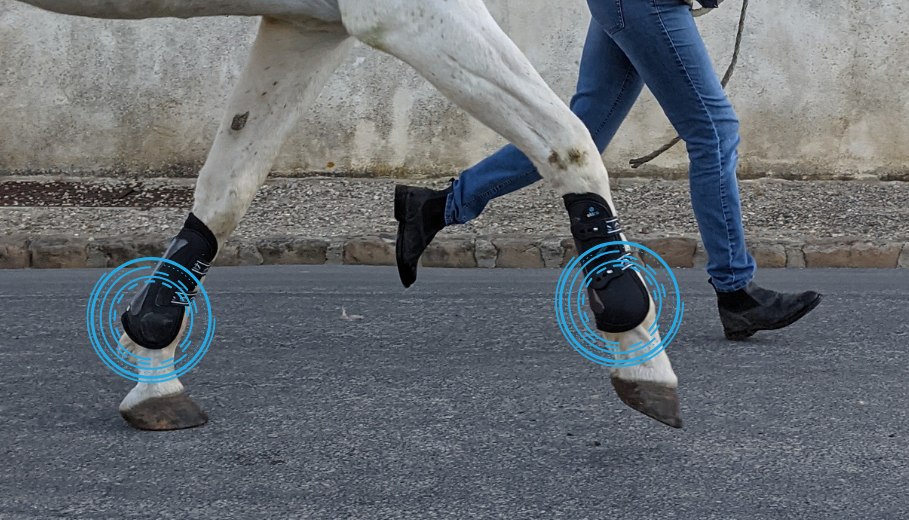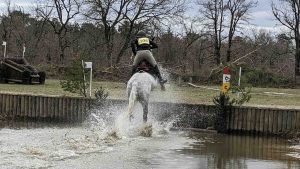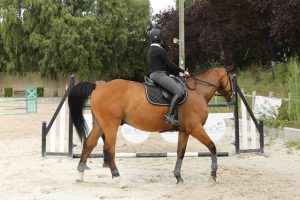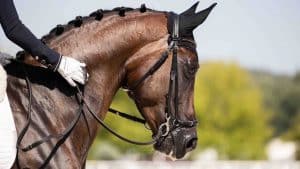The ability of the connected boots Tendiboots™ to detect the gait signature specific to each horse was demonstrated in 2018. Indeed, during this study, Ekico's smart boots were able to recognize more than 9 times out of 10 which gait signature belonged to which horse ! It is a decisive ability to progress in the early detection of locomotion pathologies and to detect any improvements/degradations in a horse's locomotion before the first symptoms appear.
Early detection of musculoskeletal disorders in sport horses
Last September, Dr. Kerry Pride presented at the annual congress dedicated to Traditional Chinese Veterinary Medicine her integration of the Tendiboots™ in the sports monitoring of the racehorses in her charge.
The study followed seven Quarter Horses during their competition season (five racehorses and two reining horses, including four mares, two geldings and a stallion, for a median age of five years). The horse follow-ups were carried out by Dr. Kerry Pride, a veterinarian experienced in the longitudinal follow-up of sport horses.
Each horse was recorded an average of 43 times during the competition season, over several days, from June 2021 to November 2021. These data collections with the connected boots were carried out in addition to the visual examinations of the veterinarian.
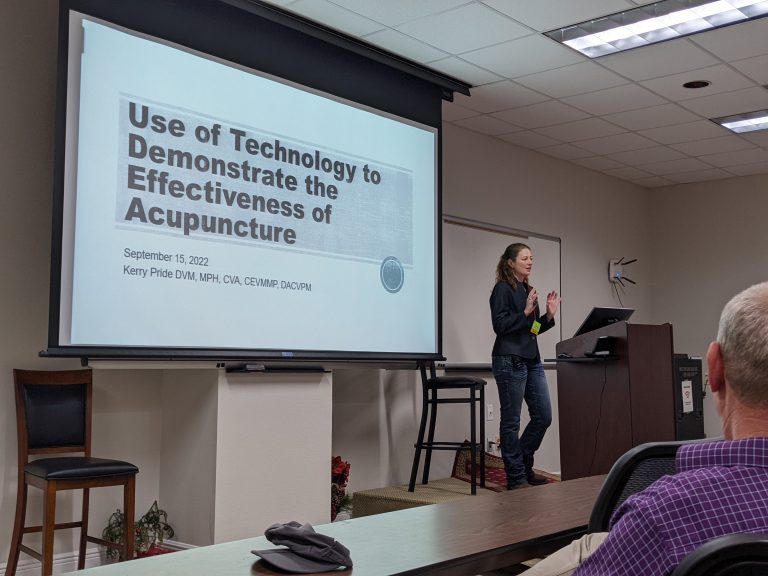
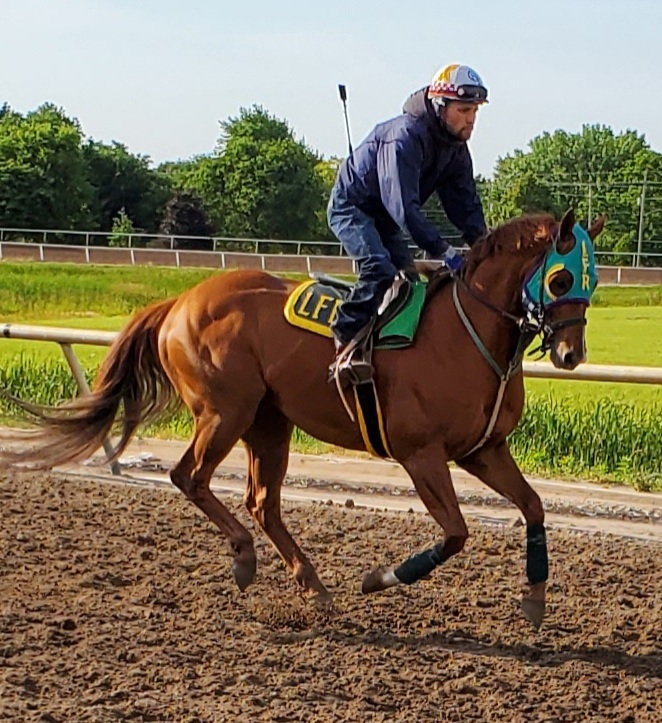
The measurement protocol has always been as follows: the recording is made on hard ground and in a straight line, on the two front legs. First at a walk for 12 seconds, twice (back and forth). The operation was also repeated at a trot for 7 seconds, also going back and forth.
During these tests, the Tendiboots are able to record several parameters such as the applied load, the stride length and the duration of support for each front limb. (During this study, only the Tendiboots™ forelimbs were available. The Tendiboots™ hindlimbs have since been released.)
Data collection could be done several times in the same day depending on the veterinary examination. The recordings were made on day 0 (corresponding to the day of the competition), then 24 or 48 hours later (day 1 or 2 after the competition), then two weeks later (day 14 after the competition). This protocol was followed each time a horse competed.
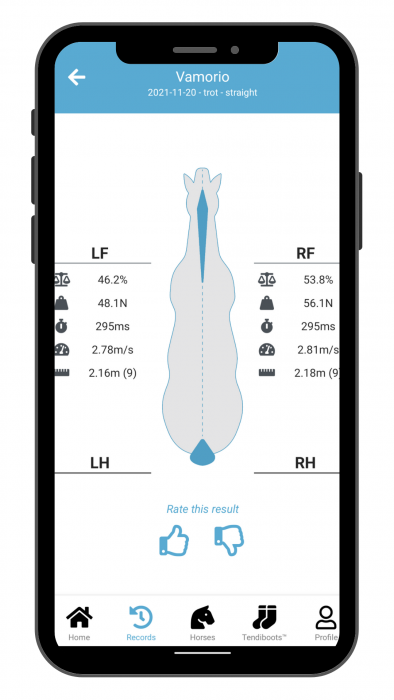
Study results
Among the study panel, the veterinarian detected 12 times changes in the locomotor signature specific to each horse measured. The Tendiboots™, for their part, detected 15 changes (related to lameness, overtraining, or new fittings, for example).
To do this, the load balance history was collected to have the average load balance (named “ref”) of each horse and its standard deviation (named “SD”). Thanks to these two values, upper and lower thresholds have been created (respectively named “up_th” and “low_th”). The average “ref” load balancer is the benchmark.
The thresholds were calculated as follows: up_th = ref + sd low_th = ref – sd
Then, each time the horses exceeded these thresholds, it was correlated with the results of the veterinary examination. The veterinarian also had the possibility, when she deemed it useful, to use a thermal camera as well as acupuncture (TCVM diagnostic Scan) as diagnostic aids.
Therefore, the more frequently the horse is registered, the more Tendiboots™ will understand how a horse moves and indicate when the animal deviates from its usual movement.
The variations in load balance shown by the Tendiboots™ were always a function of the practitioner’s clinical examination and the treatment applied to the horses, whether after acupuncture, manipulation, laser therapy or shoeing.
For example, for a specific horse, its two new shoeings caused a very clear load balance drift before returning to the initial balance after about four weeks.
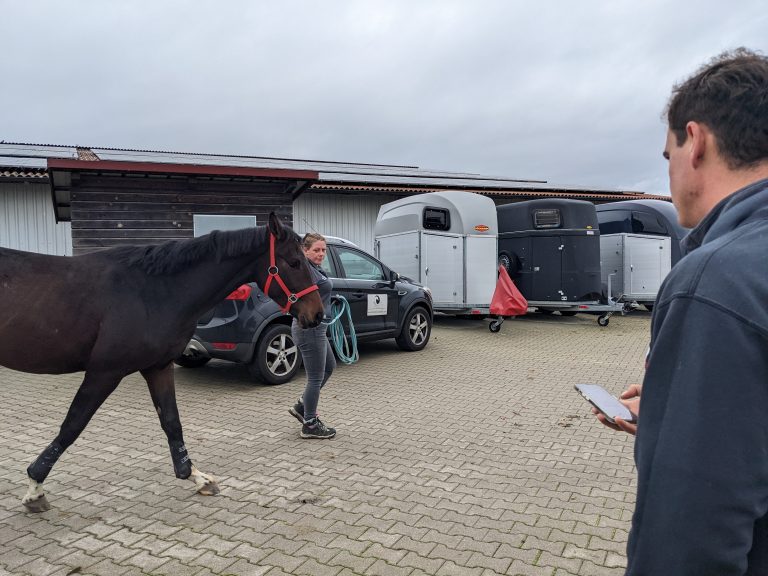
Case study

One of the horses in the study was a seven-year-old Quarter Horse gelding in race training. The horse had trained well, with no problems identified with the forelegs. The Tendiboots™ however revealed a sudden asymmetry with more load on the right foreleg (Figure 1) whereas, during previous recordings, no asymmetry had been detected (Figure 2).
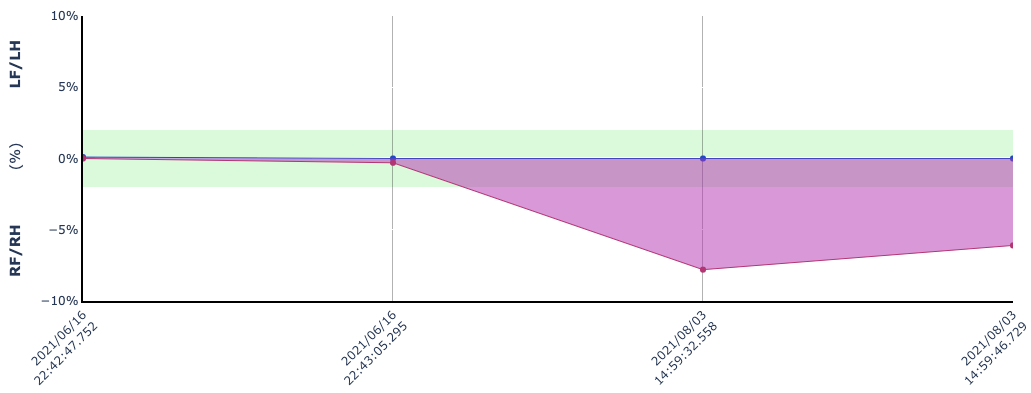
The thermal camera demonstrated an increase in heat in the middle of the body of the Superficial Digital Flexor Tendon (SDFT) of the left forelimb (Figure 3). These observations were also confirmed by the acupuncture analyzes carried out (scans).

Ultrasound examination was within normal limits, it showed no lesions in the superficial digital flexor tendon, the deep digital flexor tendon or the suspensory ligament. The ultrasound results were also sent to a board of certified equine surgeons to examine them. The conclusion is that with the Tendiboots™ and the thermal camera, an area of concern was detected before the horse had any visible lesions.
The horse was placed in a rehabilitation program for three weeks and acupuncture was performed during this time. The trainer stopped galloping the horse and walked it daily for the first week. The horse resumed trotting work with the rider during the second week and then galloping work during the third week. The horse also benefited from poultices and a daily ice treatment. A non-steroidal oral therapy finally completed the care.
The ultrasound being normal after these three weeks, the rehabilitation program ended and the horse was re-scanned. The thermal images showed the resolution of the problem (Figure 4).
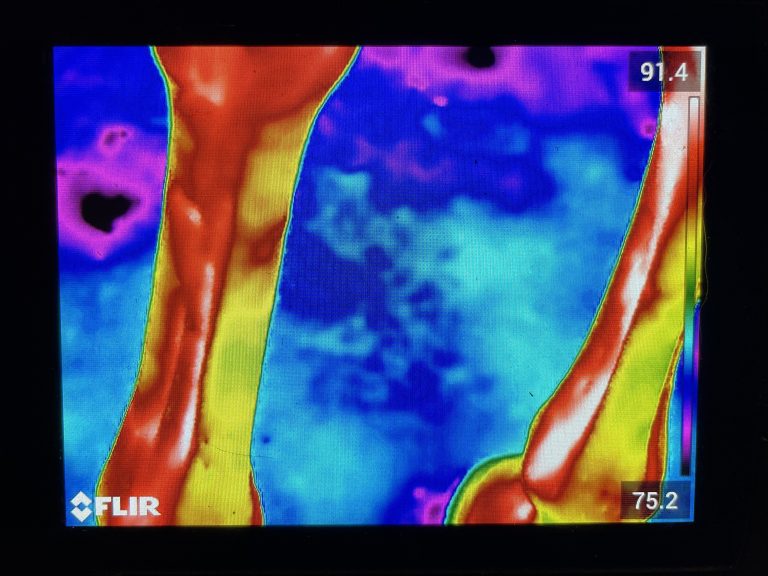
Tendiboots™ results also confirmed an improvement (Figure 5 and Figure 6). The Tendiboots™ detected a change before a potential major injury/lameness was present. The horse was able to continue its competition season without injury or recurrence.
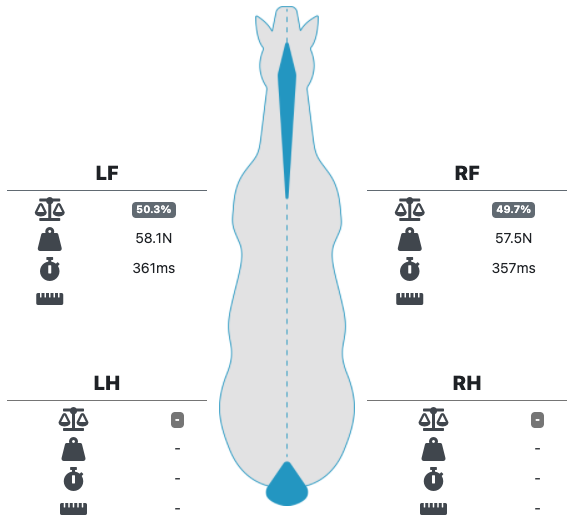

Conclusion
In this study, Tendiboots™ connected boots were able to detect small changes in gait in all horses monitored. The changes were caused by various reasons such as lameness, new shoes, or overtraining. 80% of these changes detected by the Tendiboots were confirmed by the veterinarian and this helped the latter to adapt the training and recovery of the horses during the competition season.
Throughout the experiment, horses were primarily assessed visually during a dynamic examination by an experienced veterinarian. The Tendiboots™ have provided additional information not detected by the naked eye of the veterinarian, thus improving locomotor examinations and monitoring of horses.

